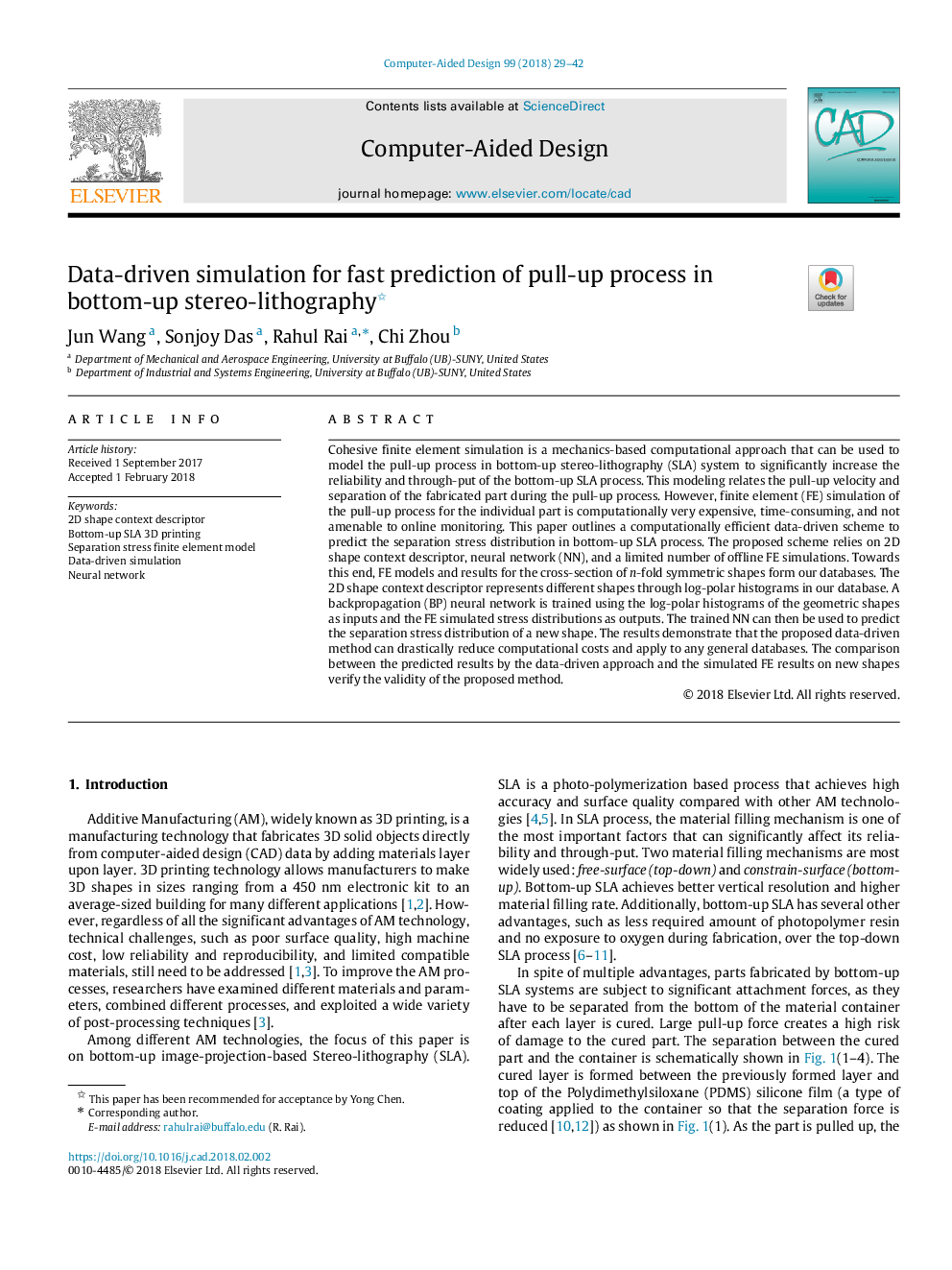| Article ID | Journal | Published Year | Pages | File Type |
|---|---|---|---|---|
| 6876431 | Computer-Aided Design | 2018 | 14 Pages |
Abstract
Cohesive finite element simulation is a mechanics-based computational approach that can be used to model the pull-up process in bottom-up stereo-lithography (SLA) system to significantly increase the reliability and through-put of the bottom-up SLA process. This modeling relates the pull-up velocity and separation of the fabricated part during the pull-up process. However, finite element (FE) simulation of the pull-up process for the individual part is computationally very expensive, time-consuming, and not amenable to online monitoring. This paper outlines a computationally efficient data-driven scheme to predict the separation stress distribution in bottom-up SLA process. The proposed scheme relies on 2D shape context descriptor, neural network (NN), and a limited number of offline FE simulations. Towards this end, FE models and results for the cross-section of n-fold symmetric shapes form our databases. The 2D shape context descriptor represents different shapes through log-polar histograms in our database. A backpropagation (BP) neural network is trained using the log-polar histograms of the geometric shapes as inputs and the FE simulated stress distributions as outputs. The trained NN can then be used to predict the separation stress distribution of a new shape. The results demonstrate that the proposed data-driven method can drastically reduce computational costs and apply to any general databases. The comparison between the predicted results by the data-driven approach and the simulated FE results on new shapes verify the validity of the proposed method.
Keywords
Related Topics
Physical Sciences and Engineering
Computer Science
Computer Graphics and Computer-Aided Design
Authors
Jun Wang, Sonjoy Das, Rahul Rai, Chi Zhou,
